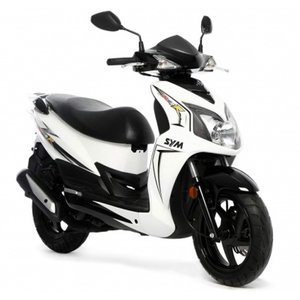SYM JET 50 (2012-2018): A Scooter Generation That Redefined Urban Mobility
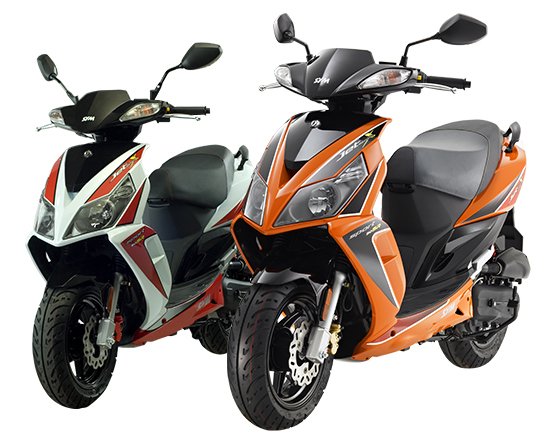
Introduction
The SYM JET 50 series, spanning from 2012 to 2018, represents a pivotal era for urban scooters. Designed to blend sporty aesthetics with practical commuter functionality, this generation carved out a niche for riders seeking agility, style, and reliability in crowded cityscapes. With variants like the Jet Sport X 50, Jet4 50, and Jet4 50R Naked, SYM catered to diverse tastes while maintaining a cohesive design philosophy rooted in Taiwanese engineering and Italian flair. Having spent a week test-riding a derestricted 2014 Jet Sport X SR, I’m here to break down why this scooter generation remains a standout choice for urban warriors.
Design & Ergonomics: Where Form Meets Function
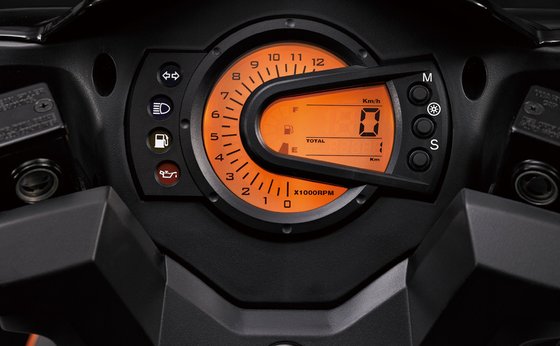
The JET 50’s design language screams "sporty commuter." Italian designer Andreani Pierangelo (of Cagiva Elephant fame) injected sharp lines, aerodynamic bodywork, and a aggressive front fascia that mimics higher-displacement motorcycles. The split steel tube frame isn’t just structural art—it contributes to a dry weight as low as 98 kg (216 lbs), making the JET 50 feel flickable even at walking speeds.
Key Highlights:
- LED Lighting: The futuristic LED taillight and dual 35W headlights enhance visibility while adding a premium touch.
- Digital Dashboard: A superbike-inspired digital cluster houses a speedometer, rev counter, fuel gauge, clock, and temperature warnings—all legible under direct sunlight.
- Storage Solutions: Lockable glove boxes, under-seat storage (fits a full-face helmet on some models), and rear racks make this scooter surprisingly practical.
The Jet4 50R Naked variant ditches some body panels for a minimalist look, exposing its tubular frame and reducing weight further. Meanwhile, the Sport X SR’s "wavy" 190mm front disc brake isn’t just eye candy—it’s a nod to sportbike performance.
Engine & Performance: Two Strokes Ahead
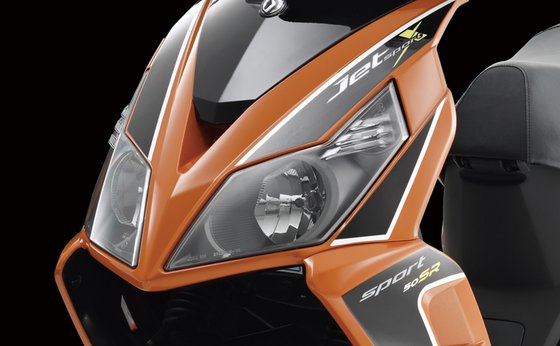
The JET 50 generation offers both 2-stroke (Jet Sport X) and 4-stroke (Jet4) engines, catering to different rider priorities:
2-Stroke Jet Sport X 50 (2012–2016)
- 49.5cc Air-Cooled Single: Delivers 3.5 HP @ 6,000 rpm and a raspy exhaust note that’s pure nostalgia.
- Derestricted Potential: While restricted models top out at 48 km/h (30 mph), derestricted versions hit 77 km/h (48 mph), transforming it into a zippy urban tool.
- Thirstier but Fun: Fuel consumption averages 2.3 L/100 km (101 US mpg)—a fair trade for the 2-stroke’s lively character.
4-Stroke Jet4 50 (2014–2018)
- Eco-Friendly Efficiency: The SOHC 4-stroke engine sacrifices peak power (3.2 HP @ 8,500 rpm) for smoother operation and 2.1 L/100 km (110 US mpg) frugality.
- Lower Maintenance: No oil mixing required, making it ideal for daily riders prioritizing practicality over thrills.
Both engines pair with a CVT transmission that’s seamless in stop-and-go traffic. The Sport X’s optional performance exhaust adds a throatier growl and marginal power gains—a popular upgrade among enthusiasts.
Ride Experience: Urban Jungle Warfare
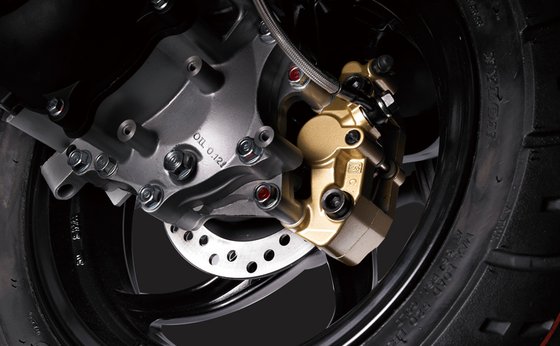
Swinging a leg over the JET 50 reveals a 775 mm (30.5 in) seat height that’s accessible for shorter riders, while the narrow profile lets you tuck through gridlocked traffic like a bicycle. The real magic lies in its handling:
- Suspension Setup: Telescopic forks and a twin-sided swingarm strike a balance between comfort and agility. Over potholes, the chassis remains composed, avoiding the "crashy" feel of cheaper scooters.
- Tire Sizes: The Sport X’s 120/70-12 front and 130/70-12 rear Duro tires offer ample grip for aggressive cornering. The Jet4’s taller 120/60-13 front wheel adds stability at the expense of some nimbleness.
- Braking Performance: The Sport X’s front hydraulic disc (190–226mm depending on model) provides confident stopping power, though the rear drum brake on base models feels underwhelming during hard braking.
In derestricted form, the Sport X SR becomes a riot on winding city streets. The engine’s powerband kicks in sharply around 5,500 rpm, urging you to exploit gaps in traffic that larger bikes can’t touch.
Competition: How the JET 50 Stacks Up
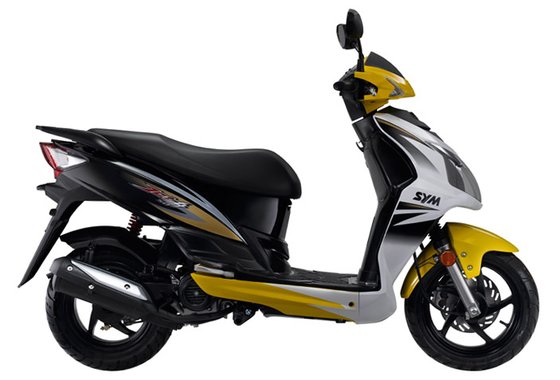
1. Honda Vision 50
- Pros: Legendary Honda reliability, 110 mpg efficiency.
- Cons: Dated design, softer suspension, and a top speed capped at 45 km/h (28 mph) even when derestricted.
- Verdict: The JET 50 outpaces it in style and performance.
2. Yamaha NMax 50
- Pros: Liquid-cooled engine, modern tech like ABS (on higher trims).
- Cons: Pricier, heavier (115 kg / 253 lbs), and less storage.
- Verdict: The NMax is tech-forward, but the JET 50 wins on value and flickability.
3. Peugeot Speedfight 50
- Pros: French styling pedigree, punchy 2-stroke variants.
- Cons: Firmer ride quality, higher maintenance costs.
- Verdict: Aesthetic rival, but the JET 50’s build quality feels more robust.
The SYM’s trump card? Its modular design. Want a naked look? Opt for the 50R. Need storage? The Jet4 delivers. Few competitors offered this level of customization.
Maintenance: Keeping Your JET 50 in Fighting Shape
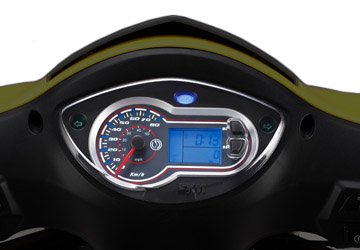
Owning a JET 50 is straightforward, but proactive care ensures longevity:
Critical Service Points
- 2-Stroke Oil: For Sport X models, use synthetic injector oil (JASO-FD certified) to prevent carbon buildup. MOTOPARTS.store stocks OEM-compatible options.
- CVT Belt: Replace every 12,000 km (7,456 miles). Look for reinforced belts to handle derestricted power.
- Air Filter: Clean every 3,000 km (1,864 miles). Upgrade to a high-flow filter for improved throttle response.
- Brake Pads: Sport X’s wave discs wear pads faster—check thickness every 5,000 km (3,107 miles).
Common Upgrades
- Performance Exhaust: Unlock 2–3% power gains and a sportier soundtrack.
- Ergonomic Grips: Reduce vibration fatigue on longer rides.
- LED Turn Signals: Enhance visibility without compromising the scooter’s lines.
SYM’s dry-sump lubrication system simplifies oil changes, but always use SAE 85W-90 transmission oil in colder climates.
Conclusion: A Legacy of Urban Agility
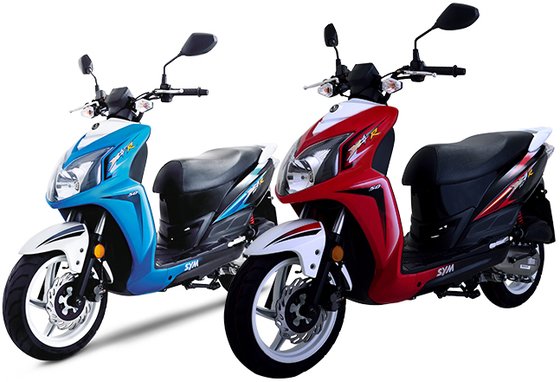
The SYM JET 50 generation remains a benchmark for what a 50cc scooter can be: fun, practical, and endlessly customizable. Whether you’re threading through Manila traffic or zipping across Barcelona’s Gothic Quarter, its blend of Italian design and Taiwanese engineering delivers a grin-inducing ride.
For owners looking to refresh their JET 50, MOTOPARTS.store offers everything from OEM brake discs to performance carburetors. This scooter isn’t just a relic—it’s a canvas waiting for your personal touch.
Ride safe, ride smart, and keep the rubber side down.



Specifications sheet
| Engine | |
|---|---|
| Stroke: | Two-stroke |
| Ignition: | CDI |
| Max power: | 2.6 kW | 3.0 hp |
| Max torque: | 4.2 Nm |
| Fuel system: | Carburetor (CV) / Separate forced oil supply (2-stroke models) |
| Max power @: | 6000 rpm |
| Spark plugs: | BR 8HSA (2-stroke) / A7RC (4-stroke) |
| Displacement: | 49.5 ccm |
| Max torque @: | 5500 rpm |
| Configuration: | Single |
| Cooling system: | Air |
| Compression ratio: | 7.2:1 (2-stroke) / 12.2:1 (4-stroke) |
| Number of cylinders: | 1 |
| Dimensions | |
|---|---|
| Wheelbase: | 1275–1320 mm (50.2–52.0 in) |
| Dry weight: | 98 |
| Wet weight: | 109 |
| Seat height: | 775 mm (30.5 in) (4-stroke) |
| Overall width: | 655–690 mm (25.8–27.2 in) |
| Overall height: | 1040–1120 mm (40.9–44.1 in) |
| Overall length: | 1840–1900 mm (72.4–74.8 in) |
| Fuel tank capacity: | 5.2–6.3 L (1.4–1.7 US gal) |
| Drivetrain | |
|---|---|
| Clutch: | Centrifugal |
| Final drive: | belt |
| Transmission: | CVT |
| Electrical | |
|---|---|
| Battery: | 12V 6 Ah |
| Starting system: | Electric & kick |
| Maintenance | |
|---|---|
| Rear tire: | 130/70-12 |
| Engine oil: | 10W-40 (4-stroke) |
| Front tire: | 120/70-12 (2-st-oke) / 120/60-13 (4-st-oke) |
| Brake fluid: | DOT 4 |
| Spark plug gap: | 0.8 |
| Coolant capacity: | N/A (Air-cooled) |
| Engine oil capacity: | 0.85 |
| Transmission oil type: | SAE 85W-90 (Winter) / SAE 85W-140 (Summer) |
| Transmission oil capacity: | 0.12 |
| Valve clearance check interval: | N/A (2-stroke) / 24,000 km (4-stroke) |
| Chassis and Suspension | |
|---|---|
| Frame: | Steel monocuna split steel tube (2-stroke) / Pipe under bone (4-stroke) |
| Rear brakes: | Drum 110 mm / Disc 160 mm (2-stroke) / Drum 110 mm (4-stroke) |
| Front brakes: | Hydraulic disc (190 mm on 2-stroke, 226 mm on 4-stroke) |
| Rear suspension: | Twin sided swing arm |
| Front suspension: | Telescopic fork |
| Rear wheel travel: | 68 mm (2.7 in) (4-stroke 50R) |
| Front wheel travel: | 70 mm (2.8 in) (4-stroke 50R) |



